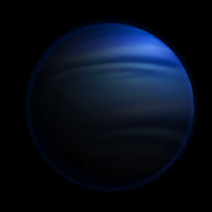The Rho Ophiuchi cloud complex is a dark nebula of gas located in the constellation Ophiuchus. It is rising just above the Milky Way plane in the night sky, 460 light-years away from our home. It is also one of the closest star-forming regions to the solar system.
Here is a new awesome picture of Rho Ophiuchi, taken by NASA’s Wide-field Infrared Explorer, or WISE (click the image to enjoy a bigger view):

You can also grab the original file here (do this at your own risk!).
The various colors visible in the picture represent different wavelengths of infrared light. One of the most striking details is the bright white nebula in the center: nearby stars heat it up and make it glow – this is called an emission nebula. The same phenomenon is happening with the bluish bow-shaped feature in the bottom right corner of the image. The bright red area is a reflection nebula: light from Sigma Scorpii, the star in the center, is reflected off of the dust surrounding it. The darker areas scattered throughout the image are made of cool dense gas, blocking out the background light: they are called dark nebulae, or absorption nebulae.
You probably also noticed those pink objects near the center of the image: they are baby stars just forming, still enveloped in their own tiny nebulae. These young stellar objects, or YSOs, are normally hidden in visible light because of the dark nebula surrounding them. This dark nebula is often referred to as their “baby blanket”.
Near the edges of the picture (top right corner, and near the center, at the bottom), two very compact and dense groups of blue stars are visible. They are actually globular clusters, M80 and NGC 6144, both being composed of some of the oldest stars in our Milky Way: some of them are as old as 13 billion years, born soon after our Universe was formed.
Finally, there are two other interesting details in this image. The two lines visible at the bottom of the image are optical artifacts from the space telescope, due to the bright star Antares that is just out of the field of view. Next to the central white nebula, at the 3 o’clock position, there is a small faint red dot. This dot is a far away galaxy, known as PGC 090239.
This image gives us an example of what the tiny dots of light we see in our night sky look like when we can get a closer view… Who would have imagined it could look like that?
